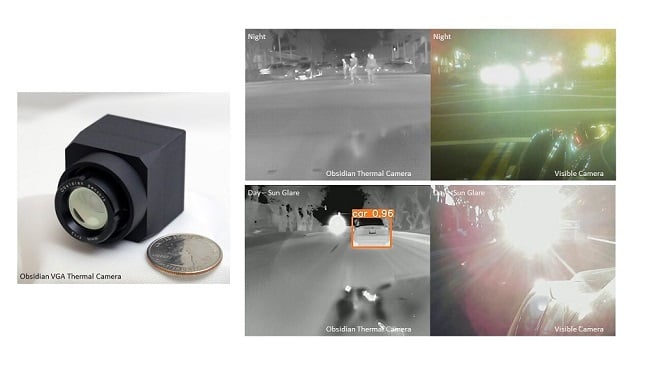
Obsidian Partners, Secures Investment for Thermal Image Sensors
Thermal image sensor technology developer Obsidian Sensors has received an undisclosed investment from Himax Technologies. Himax, located in Taiwan, is a supplier and fabless manufacturer of display drivers and other semiconductor products.
The companies will develop an advanced thermal vision solution combining Himax’s “WiseEye” AI processing capabilities with Obsidian’s thermal imaging technology. The solution, Himax said, aims to support detection in challenging environments and boost accuracy and reliability for applications, including industrial, automotive safety and autonomy, and security systems.
San Diego-based Obsidian manufacturers its sensors using a large area microelectromechanical systems platform. According to the company, the approach allows its sensors to be manufactured at established flat panel foundries, supporting low-cost and high-volume production. Qualcomm Ventures, Hyundai, and Innolux are among the existing investors in the company.
According to the companies, collaboration stemming from the investment will further support Obsidian engineering, via Himax’s integrated circuit design and know-how, as well from its experience in image processing.
Automotive headway
The Himax investment comes during the same week that Obsidian announced a partnership with Quanta Computer. Quanta is a Taiwan-based electronics hardware developer. The Obsidian-Quanta collaboration targets thermal imaging technology for automotive applications.

Obsidian’s thermal solutions will be combined with Quanta’s automotive solutions to enable automotive safety features. Shown here (clockwise, from far left): Obsidian’s VGA thermal camera, a glary nighttime image of pedestrians made clear using Obsidian’s thermal camera, a glary nighttime image of pedestrians using a normal camera, a glary daytime image of a car using a normal camera, and a glary daytime image of a car made clear using Obsidian’s thermal camera. Courtesy of Obsidian Sensors. Inc.
It forms less than one month after the National Highway Traffic Safety Administration issued its final rule mandating that a pedestrian automatic emergency braking system be a standard feature on every new car starting in 2029.
According to Quanta senior vice president Alan Chai, Quanta is actively developing imaging system solutions with visible and infrared camera technologies. "The collaboration with Obsidian enables the fusion of RGB and LWIR sensor signals using AI vision processors to trigger potentially lifesaving systems such as AEB (automatic emergency braking) and in-cabin vital sign detection,” Chai said. Further, he said, the combination of technologies additionally supports the development of new machine vision products. Applications span surveillance and security, as well as drones.
John Hong, CEO of Obsidian Sensors, said that while thermal imaging is established as a key sensor technology to improve automotive safety, the high cost of development and implementation has so far inhibited widespread uptake. Hong said that the company’s manufacturing approach overcomes bottlenecks to cost and scale.
/Buyers_Guide/Obsidian_Sensors_Inc/c33984